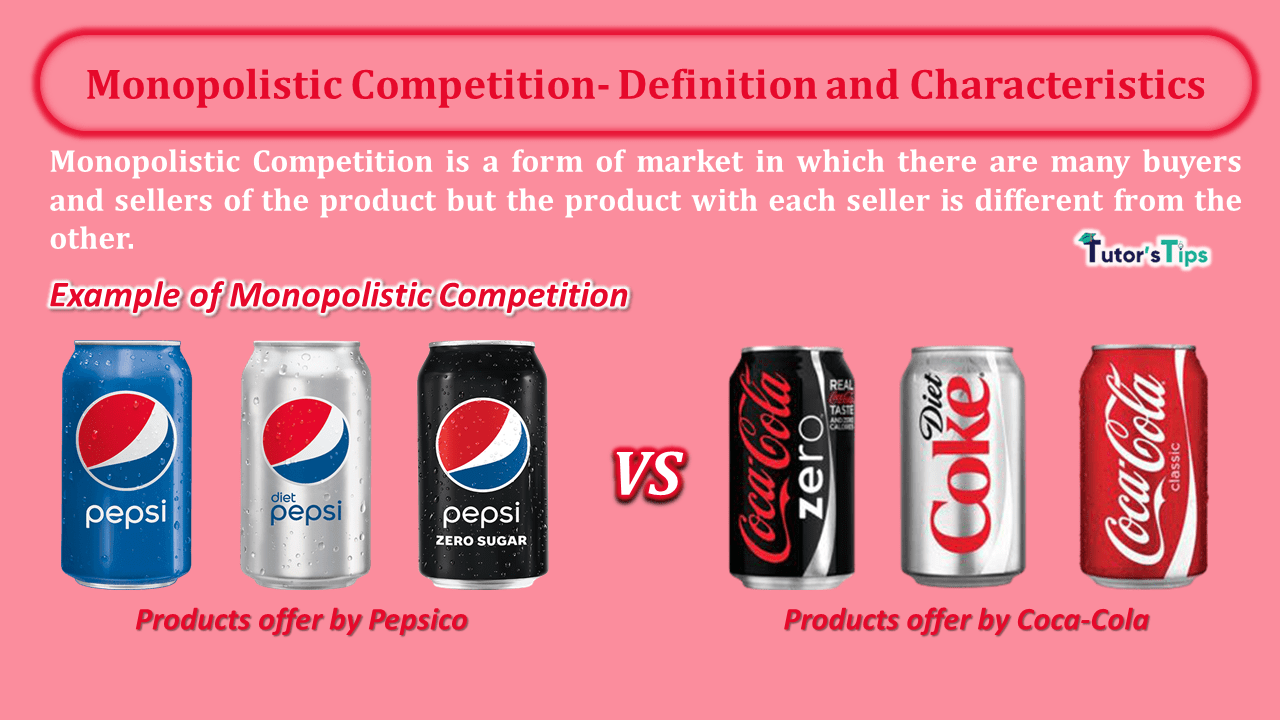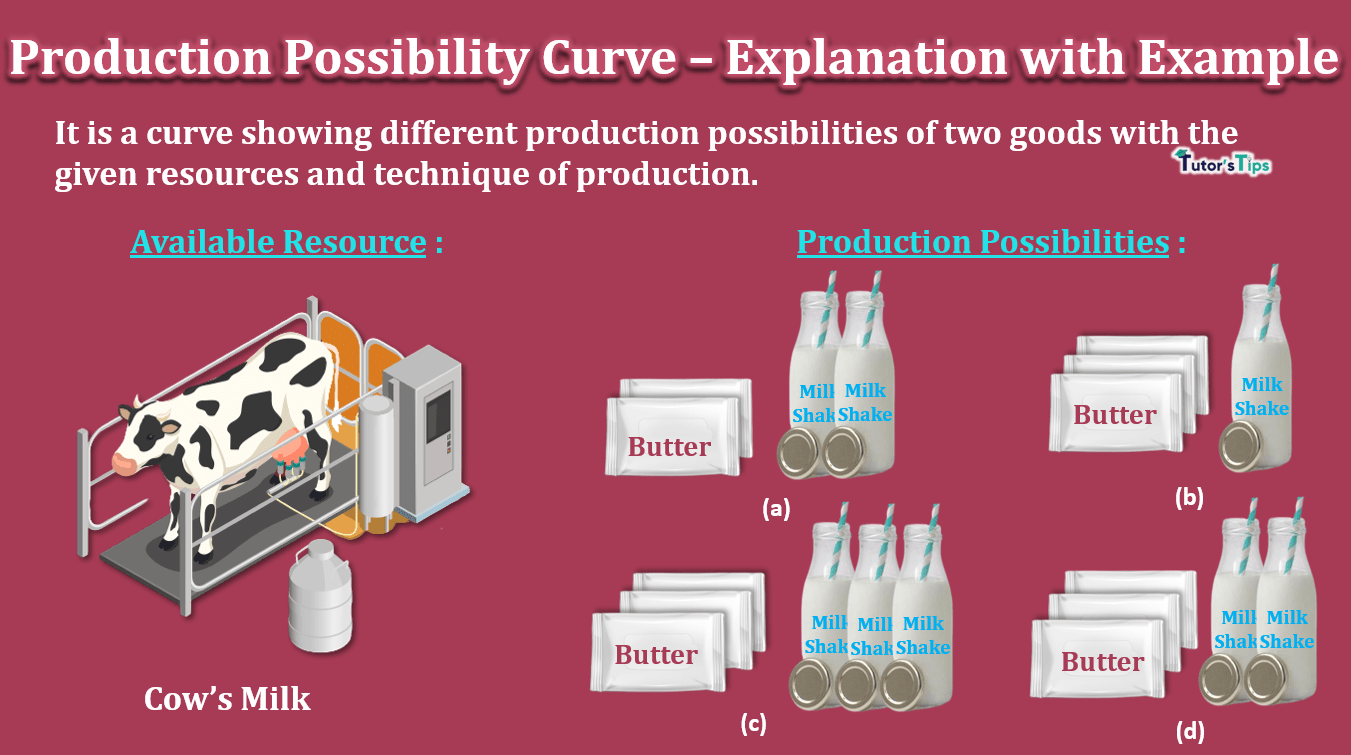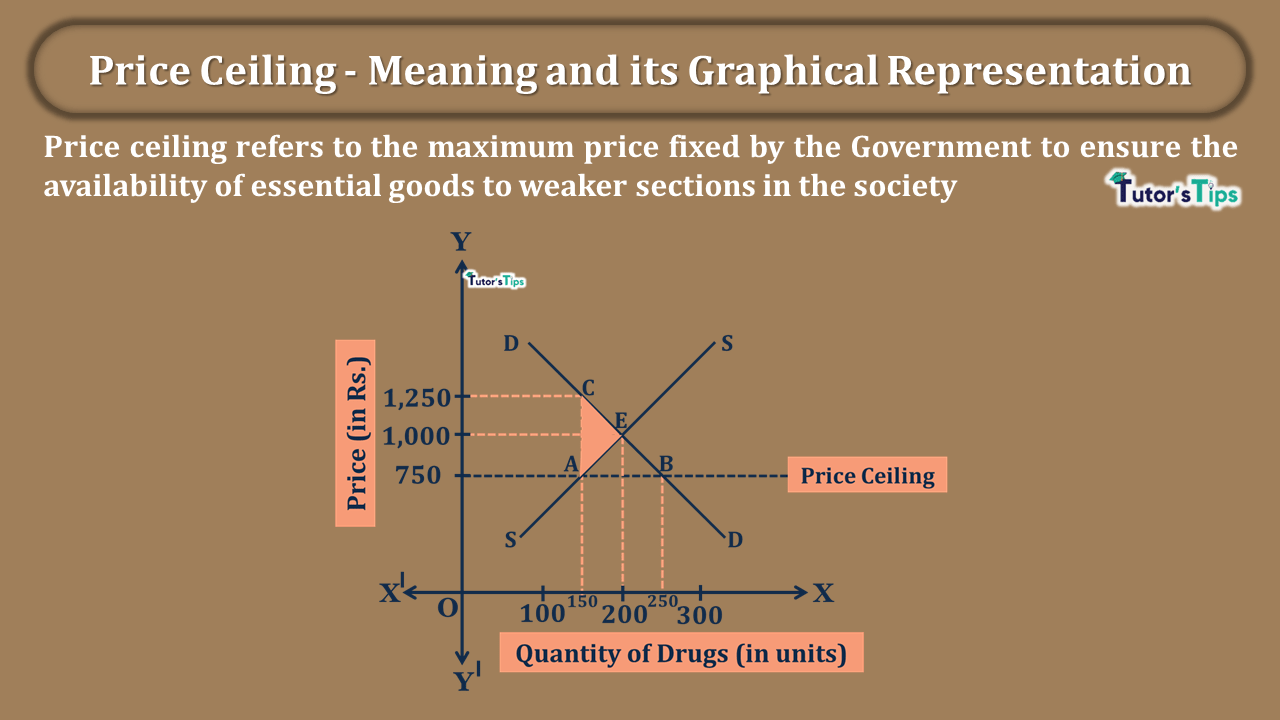Monopolistic Competition is a form of market in which there are many buyers and sellers of the product but the product with each seller is different from the other.
What is Monopolistic Competition?
It refers to a market structure where there are many sellers of the product, but, each seller sells a differentiated product. Product differentiation is being promoted through trademarks, brand names, the difference in color, size and quality. It can also be in the form of differentiation in services and facilities provided to consumers. For example, Firms producing different brands of toothpaste: Colgate, Pepsodent, Close up and Sensodyne etc.
In this market, the firm enjoys features of both monopoly and perfect competition markets. Thus, it is a situation between Monopoly and Perfect Competition. Trademark or brand name creates monopoly power for the firm. It means firms can charge a different price for their product. In other words, the firm tends to exercise control over the price. On the other hand, Since there are many producers of a commodity, it brings competition in the market. Thus, no firm has full control over the price. Hence, we can say, in monopolistic competition, the firm has partial control over the price.
Definitions:
According to J.S. Bains,
“Monopolistic Competition is a market structure where there is a large number of small sellers, selling differentiated but close substitutes.”
In the words of Baumol,
“The term monopolistic competition refers to the market structure in which the sellers do have a monopoly (they are the only sellers) of their own product, but they are also subject to substantial competitive pressures from sellers of a substitute product.”
According to Leftwitch,
“Monopolistic Competition is a market situation in which there are many sellers of a particular product, but the product of each seller is in some way differentiated in the minds of consumers from the product of every other seller.”
In the words of Lim Chong Yah,
Advertisement-X
“Monopolistic Competition is a market situation where there are many producers but each offers a slightly differentiated product.”
Characteristics of Monopolistic Competition:
Some of the characteristics of this market are:
A large Number Of Buyers and Sellers:
Under Monopolistic Competition, there is a large number of sellers selling differentiated product. Also, The producers produce the product for a large number of buyers.
Product Differentiation:
It is a salient feature of this market. ‘Product Differentiation’ means that at any point in time, the consumer will be offered a wide range of styles, brands and quality of a product. In other words, it is a situation, when the consumer can differentiate the product from another one. Therefore, the products in this market are close substitutes but not perfect substitutes. For Example, the Colgate and Patanjali Dantkanti are close substitutes for each other. But, these are not perfect substitutes for most of the buyers.
Selling Costs:
In this market, product differentiation is supported by heavy advertisement and publicity. Thus, it adds up in the selling costs of the firm. This expenditure is incurred to increase market share. Hence, due to advertisement, buyers develop brand loyalty. This brand loyalty brings more control over the price.
Demand Curve in Monopolistic Competition:
Partial Control over the price leads to a downward-sloping demand curve. Here, the downward-sloping demand curve represents the increase in quantity sold with a fall in price and vice-versa. The following figure represents the demand curve under this market:
Non-Price Competition:
Non Price competition makes it different from other markets. It refers to a market strategy adopted by a firm to increase the market share through advertisement or publicity. For Example, Two firms producing washing powder i.e. Surf excel and Tide use different advertising strategies to increase the market share. Suppose, both firms offer different free gifts on purchase of their product. In this way, they are competing with each other to attract more consumers. Such a competition represents Non-price Competition.
Freedom of Entry and Exit:
In this market, the firms are free to enter and exit the market. However, new firms have no absolute freedom of entry to enter. It is because the firms have legally patented products. Thus, new firms cannot produce identical products. Also, in this, the term ‘group’ is used for a number of firms producing differentiated products, rather than ‘industry’.
Limited Mobility in Monopolistic Competition:
Under this market, the factors of production, as well as goods and services, are not mobile. Therefore, different prices prevail for the same factor and goods in the market.
Imperfect Knowledge:
In this market, buyers and sellers lack perfect knowledge about the prices. Because it is impossible for buyers to compare the products of different firms with differentiation. Thus, buyers prefer to buy a particular brand. They must buy even if the price is a little higher than the product of other firms. Similarly, the producers are not fully aware of the prices of factor services being offered by other firms.
Advertisement-X
Thus, in short, monopolistic competition is a market in which there is a large number of sellers, selling differentiated products. Each firm has partial control over price.
Thanks Please share with your friends
Comment if you have any questions.
References:
Introductory Microeconomics – Class 11 – CBSE (2020-21)







1 Comment